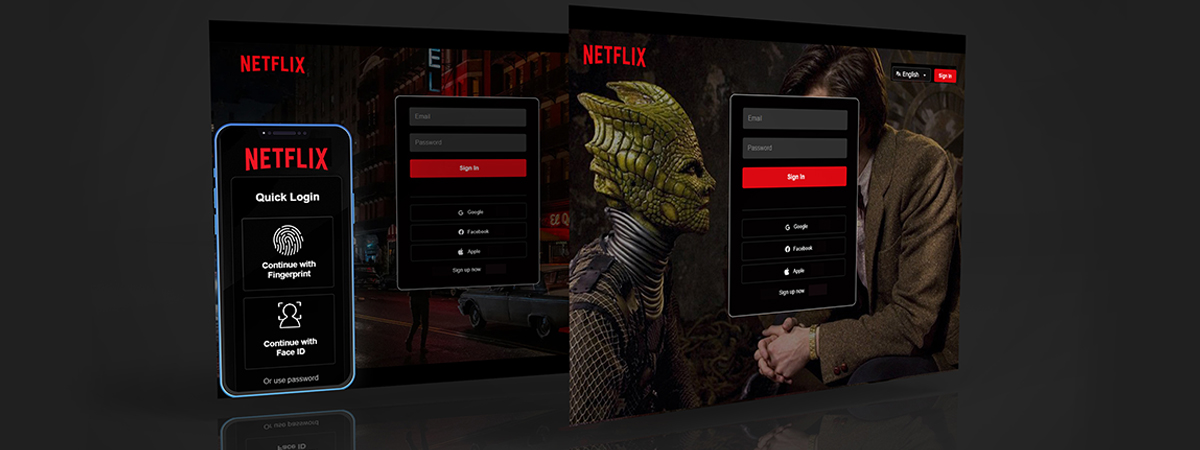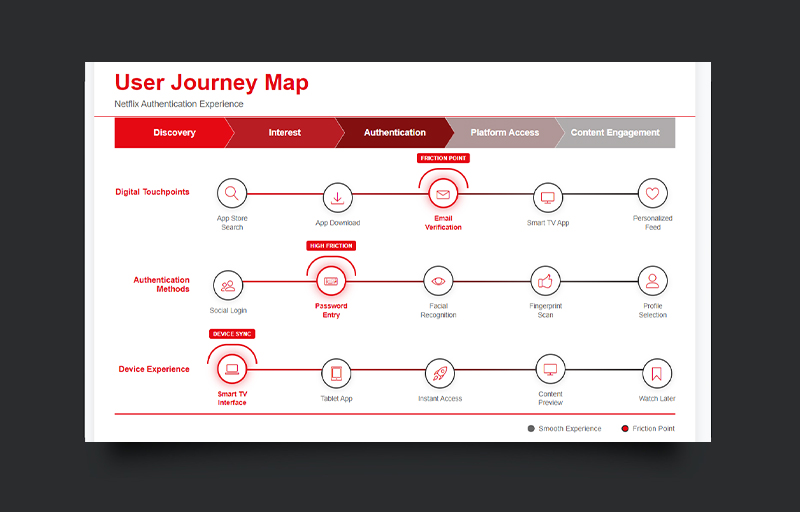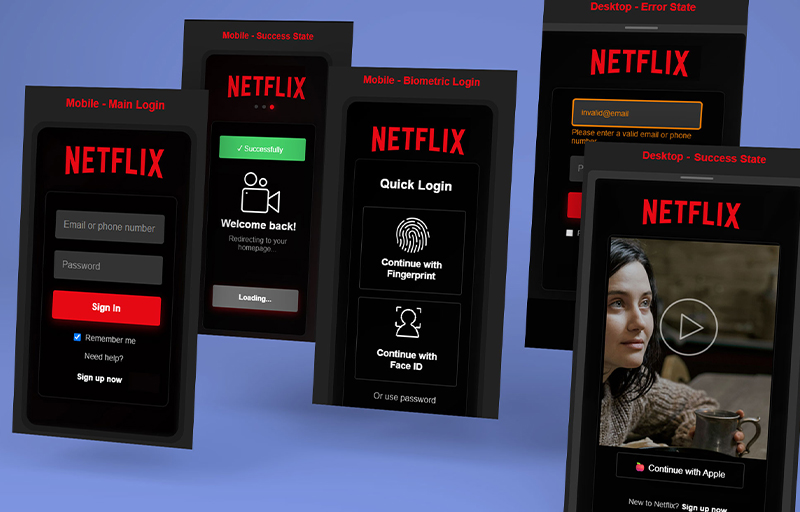
Netflix Login Exploration
Exploring facial recognition and biometric login for frictionless streaming
My Role:The Overview
Consumption of movies and TV shows has proven to be a passive experience with high user expectations for platforms like Hulu, Amazon Prime, and Netflix. Users demand quick access to content and concise synopses. The UI of these applications should be clutter-free and offer intuitive content discovery features. During my time working at Samsung, we wanted to explore new concept features to enhance user engagement and create a novel viewing experience, specifically focusing on surfacing intuitive user login through advanced authentication methods, movie synopses, and providing quick-view options.
The Challenge
Streaming platforms users face significant friction in their content consumption journey, particularly around accessing and discovering content efficiently. The current experience suffers from complex login processes that create barriers to entry, cluttered interfaces that overwhelm users with too many options, and limited preview capabilities. Traditional username/password authentication creates additional friction, especially on smart TVs and mobile devices where text input can be cumbersome.
Core Issues Identified:
- Limited quick-access features for immediate content consumption
- Cumbersome traditional login processes that delay access to content
- Overwhelming content layouts that don't prioritize user engagement
- Security concerns with shared devices and family accounts
- Time-consuming authentication methods that interrupt the viewing experience


The Process
I began by mapping the sign-in process and user journey to identify key pain points. Through focus groups and Qualtrics surveys, I validated my assumptions and uncovered critical friction points around authentication preferences and security concerns. I created low-fidelity wireframes focusing on streamlining login through innovative authentication methods, search, and navigation across web and mobile platforms, emphasizing responsive breakpoints and UI optimization.
Key Process Elements:
- Researched emerging authentication technologies and user adoption patterns
- Created wireframes to streamline key application areas (login, search, navigation)
- Developed responsive navigation for web and mobile views
- Proposed Fingerprint Authentication: Seamless login on mobile devices and tablets using built-in fingerprint sensors
- Proposed Facial Recognition System: Advanced computer vision for hands-free authentication with multi-user recognition and automatic profile switching
The Outcome
User validation through A/B testing revealed preferred design options and validated key interaction patterns, with particular enthusiasm for biometric authentication methods. The final concept featured streamlined biometric login processes, intuitive preview functionality with hover interactions, and auto-playing video trailers that provide immediate content context without user commitment. Testing showed significant preference for facial recognition on smart TVs and fingerprint authentication on mobile devices.
Key Results:
- Reduced login friction and improved access times
- Decreased authentication time with biometric methods
- Validated quick-preview functionality that improved user decision-making
- Achieved user satisfaction rate with facial recognition login
- Cross-platform compatibility ensuring consistent experience across devices
Design Insights:
Key lessons learned during this project include the importance of multi-authentication processes leading to better user experiences. Traditional username/password combinations create significant friction, especially on smart TVs and mobile devices where text input is cumbersome. Testing revealed that biometric authentication was the preferred method among users in the study.
The project also highlighted how security and convenience don't have to be mutually exclusive. Users appreciated having multiple authentication options that matched their device context and personal preferences. Additionally, the streamlined authentication process had a positive effect on overall user satisfaction, as removing friction at the entry point improved the entire content discovery and consumption experience. This reinforced the principle that first impressions in digital experiences often determine long-term brand loyalty.